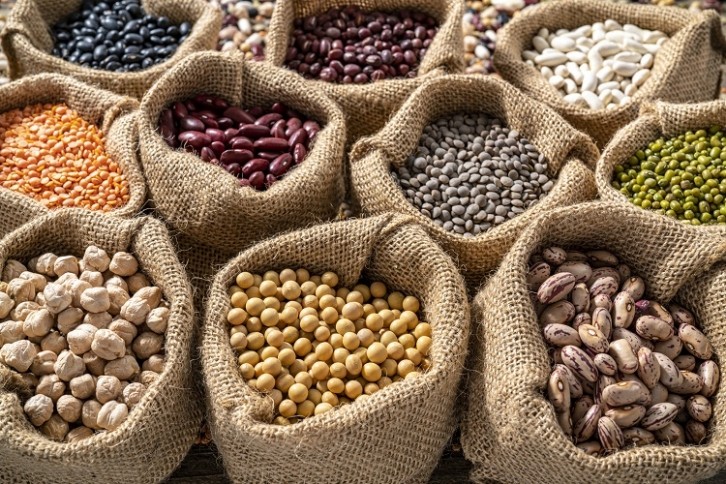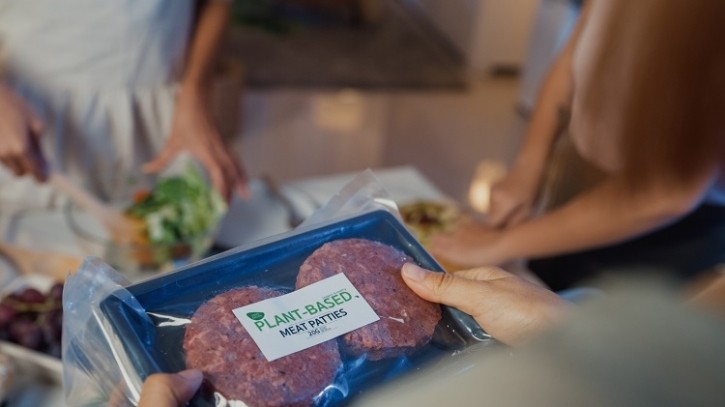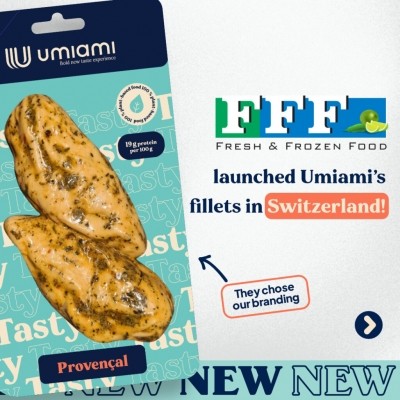From taste to texture and nutrition: How can plant-based meat reboot category growth?

Some are calling it a slowdown, others are calling it a ‘shakedown’. Whatever the terminology, plant-based meat makers are becoming increasingly aware that sales in many major markets are waning.
The Good Food Institute puts this down, in part, to reduced consumer demand, combined with inflationary pressures. This fusion is also likely responsible for instability observed across the plant-based meat market: in the most serious cases companies have hired administrators or filed for bankruptcy.
Faced with a global market slowdown, how can plant-based meat makers upgrade taste, texture, and nutrition to reinvigorate demand? We ask industry experts.
Is taste still king?
Squeaky Bean, UK-based plant-based meat brand owned by The Compleat Food Group, appears to be bucking the trend. While other brands struggle, Matthew McAuliffe, group innovation and product development director at The Compleat Food Group says the brand’s repeat purchase rates are ‘really encouraging’.
“We’re actually continuing to grow,” he told FoodNavigator’s Protein Vision broadcast event in June.
More insights from this discussion can be found here: Is it ‘shakedown’ time for the plant-based sector?
The product development chief puts this down to the ‘deliciousness’ of Squeaky Bean – a brand with a diverse line of plant-based alternatives, ranging from deli meats to nuggets. “If you can get your consumer addicted to your products…then that deliciousness is essential.”
But ensuring deliciousness is no easy feat, especially when mimicking meat. For consumers to make the move from a conventional meat product to a plant-based alternative, they expect to have those engrained expectations satisfied, explained Michel Mellema, global innovation program director, Re-Imagine Protein, at ingredients supplier IFF.
If one considers that in the supermarket, a consumer has a ‘split second’ to decide what to serve up at home, that ‘underbelly’ decision will likely come down to two factors: sensory features and affordability, we were told.
“We talk a lot about sustainability, and that’s an underlying societal trend. But in that split second in the supermarket, the majority of consumers are [thinking about] sensory expectation at an affordable price.”
Gilbert Verschelling, business development and innovation savory director at DSM, who is responsible for the company’s meat and fish alternative segment, agrees that taste is still right up there in terms of factors influencing purchase decisions.
“I think taste is still king. In consumer research and surveys we still find that a lot of consumers still think the current offering is…not good enough in terms of taste, and so people are not buying – or going into – the category…So that’s still something we need to improve.”
Addressing off-notes in plant-based proteins
As to how taste can be improved within plant-based meat products, IFF’s Mellema observed that plant-based proteins tend to suffer from ‘greenish’ or ‘cardboard’ off-notes. Many companies are investing resources into solving this problem, but the protein expert doesn’t believe industry is yet at the limit of what can be achieved.
And it doesn’t come down to taste alone. Flavour and textures are linked, he explained. “There is a taste element that has to do with plant proteins suffering from what I describe as a ‘short texture’, [meaning] sandiness, grittiness, brittleness and lack of juiciness. This is something we see generically for plant-based meats and plant-based dairy.”
For Mellema, it’s a fundamental problem related to the structure of the proteins themselves as well as how they respond to saliva. “I think this is an area that in the coming five years could be a very fruitful area for companies that have expertise on tailoring this on flavours or using enzymes…to crack this specific challenge.
“It’s all about lowering the gap between what consumers expect and what is provided by plant-based products. It has to do with the…grittiness and the lack of juiciness in many of those products.”

Like Mellema, DSM’s Verschelling sees a strong connection between flavour and texture, and more specifically how both are released when chewing on a meat alternative. “That’s crucial,” he told delegates at the Protein Vision event. “That interplay between the flavours and the texture, and how you release those flavours, is very important and somewhere we still need to see innovation.”
Masking off-notes can be a key tool in the toolbox for manufacturers of plant-based meat. Research into the triggers behind particular off-notes in plant proteins continues to build, resulting in a greater understanding of the impact on taste buds and other receptors in the mouth. Relevant ingredients suppliers are also increasingly well-versed in how to reduce unwanted off-notes either through processing or adding differing flavours.
But it’s not all about masking. Blending plant proteins is another trick up ingredients suppliers’ sleeves. “We really see that when you start blending proteins, you get a different overall taste profile of the matrix,” explained Verschelling. “That can help to get a much better taste impression from the start.”
Spotlight on texture: is meat mimicry still the best approach?
The link between taste and texture is also an obvious one to Dr Yishai Mishor, founder and CEO of Israeli meat alternative supplier Meat.The End. The start-up was founded on the premise that the texture of plant-based meat alternatives is below par, and technology can help make significant improvements.
“Texture is everything that happens in your mouth when you eat that is not associated with your taste buds. It’s the physics of chewing. It’s when something is crispy, juicy, and gummy, etc.,” Dr Mishor told FoodNavigator in a previous interview. Until the texture of plant-based meat alternatives completely mimics that of conventional meat, consumers will not shift from animal to plants en masse, we were told. “If you want to accelerate change, you have to fix texture.”
Meat.The End’s approach is to ‘reinvent’ traditional extrusion technology for a ‘significantly better bite’. “The strong belief I have is that by making better texturization techniques you can allow for the introduction of new proteins [Meat.The End predominantly works with soy, but recently started working with chickpea protein as well] and bring a much for satisfactory sensorial outcome,” said Dr Mishor at the event.
As to whether true meat mimicry is the ultimate goal, The Compleat Food Group’s McAuliffe told us he believes it’s at least the starting point. The Group has invested time and energy in R&D to develop plant-based version of meaty classics, including a chorizo alternative that is ‘genuinely cured’, contains smoked paprika, and not only looks like chorizo, but cooks like it as well.
And Squeaky Bean’s meat mimicry continues to improve, we were told. Working to ensure every new product is ‘better than the last’ is important to the company, but makes for an ‘innovation stress’, said McAuliffe. “We’re doing a better job all the time, but we’ve still got room to go.”
Whether meat mimicry will remain the aim in the future is difficult to say. It might be that the current strategy encourages newcomers to the category, and that the complete transition is achieved when industry moves beyond mimicking what already exists.
This is what DSM’s Verschelling believes could be the case. “It’s very interesting that we always call it a meat alternative or a fish alternative. We very much link it to something that we don’t want to eat, in a sense. It’s an alternative.
“What I would like to see more and more…[is] a category that can stand on its own two feet. [That it becomes a] separate food category that you go to when you want to eat something else…[That’s] my hope for the future.”
Nutrition: ‘There is a responsibility for industry to get it right’
Health is amongst the key drivers behind decisions to reduce meat intake. But increasingly, health-conscious consumers are questioning the nutrition credentials of plant-based products, including whether they can deliver on macro- and micronutrients.
And not without reason. In supermarket sampling within Europe, plant-based burgers have been found to contain excessive levels of salt or saturated fat, explained DSM’s Verschelling. “That does not help to bring that healthy image across plant-based products. That’s something we can definitely improve.”
But nutrition can present an opportunity to help right some of consumers’ micronutrient wrongs. Too many consumers in western Europe are deficient in vitamin B12, omega 3, and vitamin D, stressed the meat and fish alternative lead. “It’s definitely a category where I think this category needs to pay attention…There is a responsibly for the segment to make sure the nutrition is right.”
Some shopper hesitation around plant-based meat consumption may also lie in the unknown. Whereas meat and dairy have been around for centuries, and therefore consumers are aware of where these products come from, plant-based meat alternatives are relatively very new.
There is ‘definitely’ less knowledge around plant-based meat production, according to IFF’s Mellema, who believes industry has a role to play in explaining how these products are made. Turning a soybean into a meat analogue involves processes, he told the Protein Vision event, made up of ‘heating, high pressure cooking, and a bit of stirring’. “There is a role for us to play in explaining these types of things and it will take time.”
It's not a health issue, it’s a perception issue, he suggested.

Whether all vegan food products should be healthy is also relevant to this conversation. The Compleat Food Group’s McAuliffe is not convinced they all need to be. “There is an element of moderation that we all need here. Not all vegan food has to be healthy, but we do need to eat foods in moderation – and that includes ultra-processed foods.”
Missed Protein Vision 2023? Don’t worry, all four sessions profiling cutting edge innovation in the alternative meat and dairy space are still available to view. Register here to watch on demand.

























